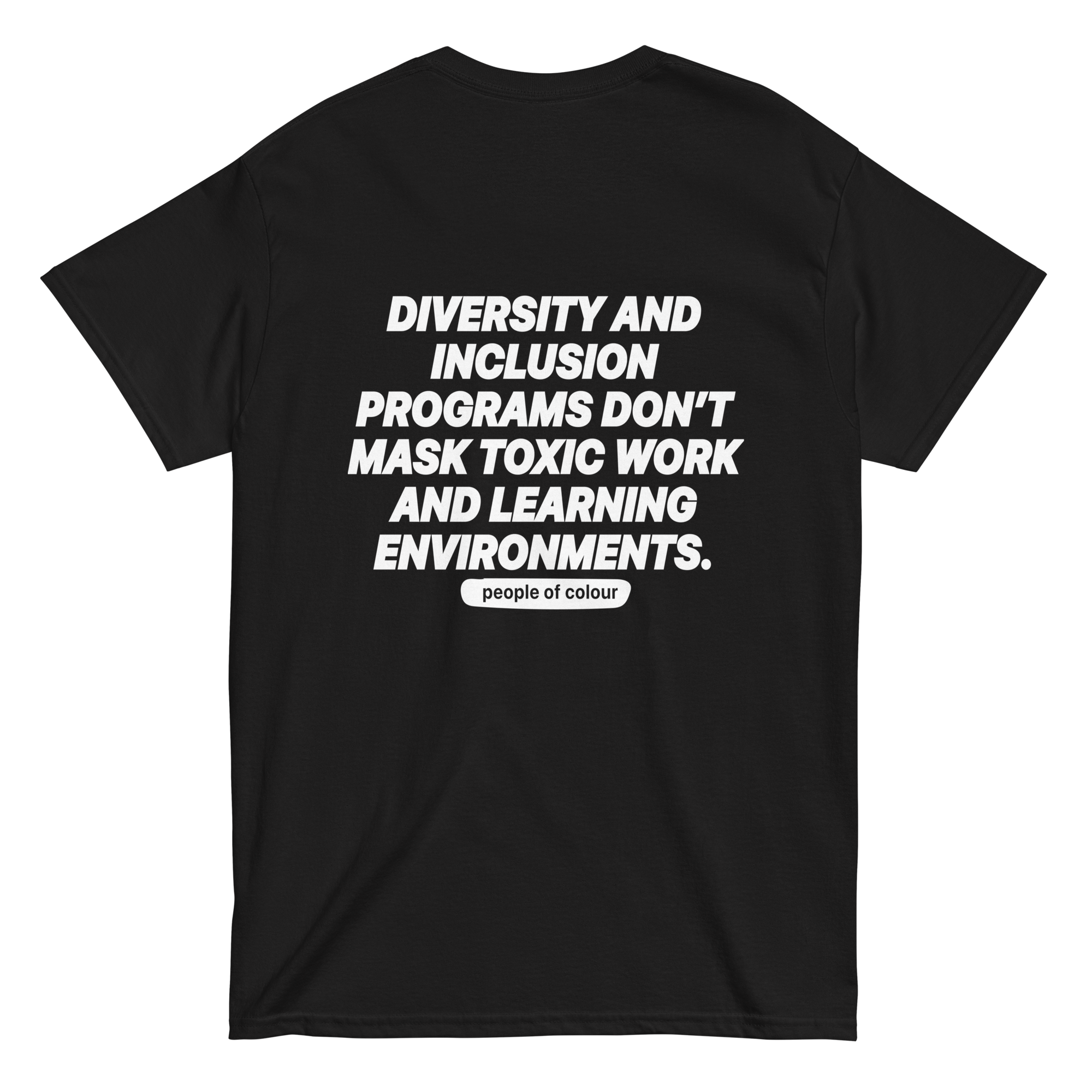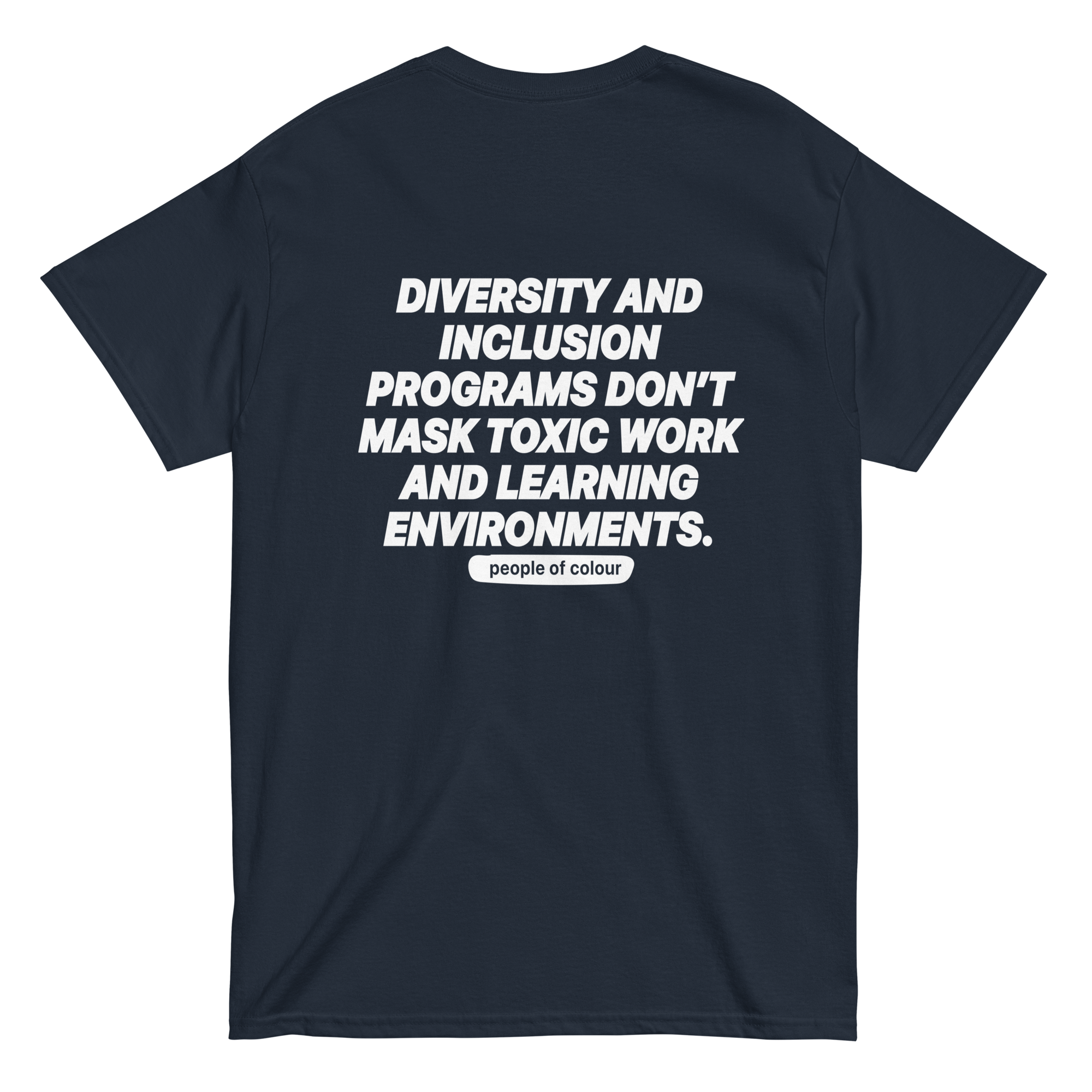DIVERSITY AND INCLUSION




DIVERSITY AND INCLUSION
[Unisex Sizing. 6 oz. 100% cotton // Preshrunk to minimize shrinkage]
Diversity and inclusion initiatives have become increasingly prevalent in workplaces and educational institutions as society grapples with issues of equity and representation. While these initiatives are crucial steps toward creating more inclusive environments, they cannot single-handedly mask toxic work and learning environments.
Toxicity in these settings can manifest in various forms, including harassment, discrimination, bullying, microaggressions, and unequal treatment based on factors such as race, gender, sexual orientation, disability, or socioeconomic status. These behaviors not only harm individuals directly affected but also undermine the overall culture and productivity of the organization or institution.
While diversity and inclusion initiatives may aim to increase representation and create a sense of belonging for marginalized groups, they cannot effectively address underlying systemic issues or root causes of toxicity. Merely hiring a diverse workforce or admitting a diverse student body is not enough if these individuals are subjected to discrimination, bias, or hostility once they are within the organization or institution.
In fact, superficial diversity efforts can sometimes exacerbate existing tensions by tokenizing marginalized individuals or creating the illusion of progress without meaningful change. This can further alienate underrepresented groups and perpetuate feelings of marginalization and exclusion.
To truly address toxicity in work and learning environments, organizations and institutions must be willing to engage in deep introspection and structural change. This may involve implementing comprehensive anti-discrimination policies, providing diversity training for all employees or students, establishing clear channels for reporting harassment or discrimination, and holding perpetrators accountable for their actions.
